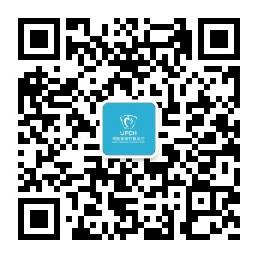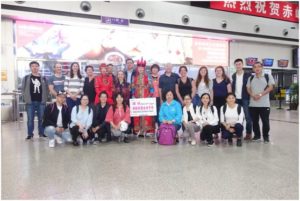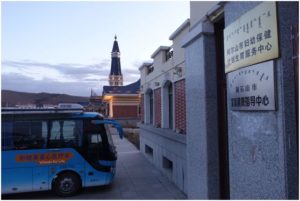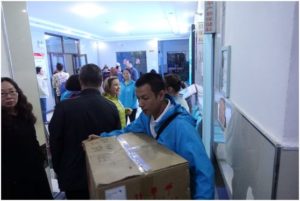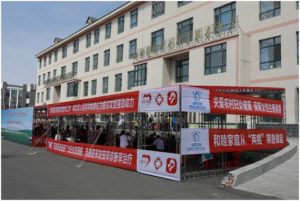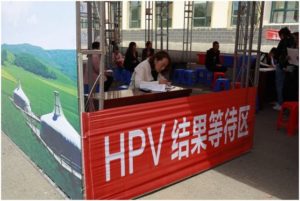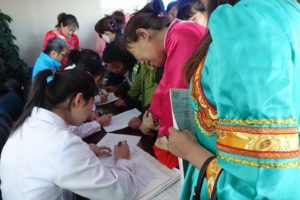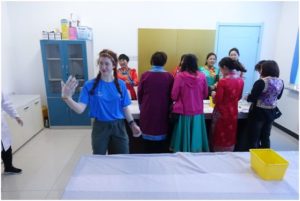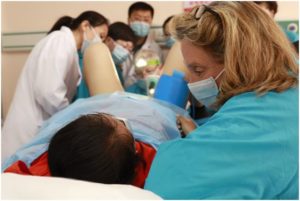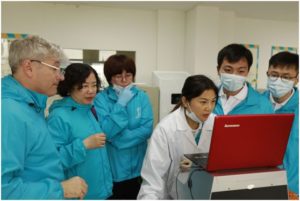Tech Empowers Medical Aid – United Foundation for China’s Health
By 基金会理事长赵熙
Tech Innovation Empowers Medical Aid: Read about the Epic UFCH Wheels for Life 2019 Cancer Screening Trip to Inner Mongolia
The headline might make you wonder how technology innovation relates to medical aid. Well, let’s recap on our 5,000-km journey across the vast grasslands of Inner Mongolia…
Beijing and Inner Mongolia, though far apart, share a lot in common. Under the framework of a Beijing initiative to offer partner assistance in Inner Mongolia to alleviate poverty through healthcare, the UFH medical team once again boarded the United Foundation for China’s Health Wheels For Life mobile clinic and headed northward in the blooming month of May.
The mothers on the grassland always impress us as diligent, kind, righteous and tough women who are the backing of numerous families. To help a poor mother means to save a family, which is exactly what motivates the United Foundation for China’s Health to carry out cancer screening charity services, which gained massive support from the government and the health commission of the autonomous region as well as medical volunteers from various places.
As the day dawned on May 18, 2019, UFH experts from China and abroad, along with doctors from the Sun Yat-sen University Cancer Center, the People’s Hospital and the Maternal and Child Healthcare Center of Inner Mongolia Autonomous Region as well as the Hospital Affiliated to Inner Mongolia Medical University set off from Beijing in the light rain for yet another charity program. Xiaohui Ouyang, Vice Chairman of the People’s Government of Inner Mongolia Autonomous Region, Hongzhi Xu, Director of Inner Mongolia Autonomous Region Health Commission, Roberta Lipson, UFH CEO and Founder, and leaders from Chifeng Municipal Health Commission and from the Party Committee and government of Bairin all attended the opening ceremony of the charity service.
Despite the prolonged rain during the night, the local women were eagerly waiting to have the screening. Our medical team departed after eleven o’ clock in the evening on May 17 from Beijing Nanyuan Airport to fly to Chifeng Yulong Airport and then drove for three hours before arriving at Bairin. Upon arrival, the UFCH staff and the Wheels For Life bus rushed to the Maternal and Child Healthcare Center to unload and assemble the equipment. When the work was basically done, it was almost two o’clock in the morning.
When we walked out of the healthcare center, we saw many women from the grassland already standing in line with their umbrellas. It might seem hard to believe but there they were. Waiting patiently for their free cancer screenings. Life was so hard for the mothers who tried to get thereovernight for the long-awaited screening and then waited throughout the night at Bairin Left Banner. At long last many of them received the first free screening for cervical and breast cancer; over a span of more than one hour their cervical cell self-sampling was done with the guidance of UFH volunteers; while waiting for the HPV test result, they had abreast ultrasound examinations and received other medical examinations.
Over the two working days of May 18 and 19, the team completed questionnaire surveys related to 1373 cases of HPV screening, more than 1000 cases of breast ultrasound imaging and 1179 cases of cervical disease. On May 20, prior to departing for Arshaan over a thousand miles away, the staff rose early and began to work at six in the morning and after hours of work, finished the colposcopic diagnosis and treatment of the last batch of 27 HPV positive patients.
It was almost noon by the time the medical vehicle continued to drive northward for the next destination of Arshaan. To seize time to prepare for the clinic at the next destination, the staff on the Wheels For Life mobile clinic didn’t even stop the bus for a break or a meal. It was only after they arrived at the destination at sunset that they gulped down a meal and then plunged themselves into the preparatory work for the following day.
In the single work day of May 21, the HPV screening of 522 cases and the questionnaire survey of 303 cases were done in Arshaan City, Xing’an League. Moreover, all HPV positive patients were recalled to undergo colposcopic diagnosis and treatment where the one-stop “screening-diagnosis-treatment” was done. When all of us called it a day, the sunset afterglow had been sinking in Mongolia 40 kilometers away and the dense forest of the Great Xing’an Mountain.
Between May 23 and 24, 2019, screening was done at the Morin Dawa Daur Autonomous Banner of Hulunbuir City. Altogether the screening of 1,454 cases and the questionnaire survey among 1,200 respondents were done during the two workdays.
During our nine-day stay in beautiful Inner Mongolia, we travelled for 5,000 kilometers to three places. On this trip, the team of international and local medical experts through their joint efforts set one record after another. In the five work days we finished the HPV screenings of 3,500 cases based on cervical cell self-sampling, and found as many as 19.15% of them were HPV positive; we set the record of finishing HPV screenings of 992 self-sampling cases in one day; we conducted breast ultrasound imaging for around 3,200 cases and found as many as 3.5% of them were at high risk of breast cancer; and we finished an epidemiological survey of about 2,700 cases related to cervical diseases.
As for the epidemiological survey of cervical diseases, we would like to express special gratitude to Peking University Cancer Hospital and Institute for its participation and guidance. Our screening work used to be based on the site; nowadays epidemiological studies are conducted through evidence-based big data collected through the questionnaire surveys, which can help the government personnel, the public health agency, and the maternal and child healthcare center to develop and refine policies, allocate resources, and conduct intervention, and thus help to provide the most cost-efficient and efficacious solutions. Speaking from the perspective of medical aid, this is precisely the social impact our team wishes to exert!
These are all the results of our teamwork. Our team is very exceptional. In addition to the UFH volunteers from Beijing, Shanghai, Nanjing and Guangzhou, we received help from the government at different levels and theHealth Commissions of Hohhot, Chifeng and Bairin Left Banner, Xing’an League, Arshaan, Hulunbuir and the Morindawa Banner, and especially considerable support from the staff of the maternal and child healthcare centers. Our team included members of diverse ethnic groups, including Han, Mongolian, Hui, Yi, and Daur people, and friends from the United States, Canada, and Israel.
It was thanks to the UFH’ s endeavor in combining the testee self-sampling, on-the-spot testing in the laboratory, and AI imaging of cervical disease rather than conducting conventional tests that our team finished the large-scale program of cervical and breast cancer screenings and intervention within a few days. Such an innovative mode of “screening-diagnosis-treatment” will help improve the cervical and breast cancer screening services for impoverished women in the related age group, andit is especially significant for the women in remote and poverty-stricken areas. It is conducive to providing people with equal access to basic public health services, and more effectively implementing the cervical and breast cancer screening project to the benefit of the people. The early detection, early prevention, and early treatment of cervical and breast cancer is very significant for reducing poverty caused by disease and avoiding relapse into poverty due to disease among the women.
Hopefully now you can also realize that medical aid can be both creative and cool. We worked together for nine days and we were so busy that sometimes we forgot to eat and sleep. Though extremely tired, we felt all the joy and happiness.
With medical aid empowered by technology innovation, the United Foundation for China’s Health, based on its strengths in pooling international resources and technological means, works together with local grassroots colleagues to enhance healthcare support for impoverished mothers and poor families.
A special thanks goes to Qin Peng, a volunteer from Inner Mongolia, who took the pictures.
HEALING BRINGS HOPE
治愈承载希望
